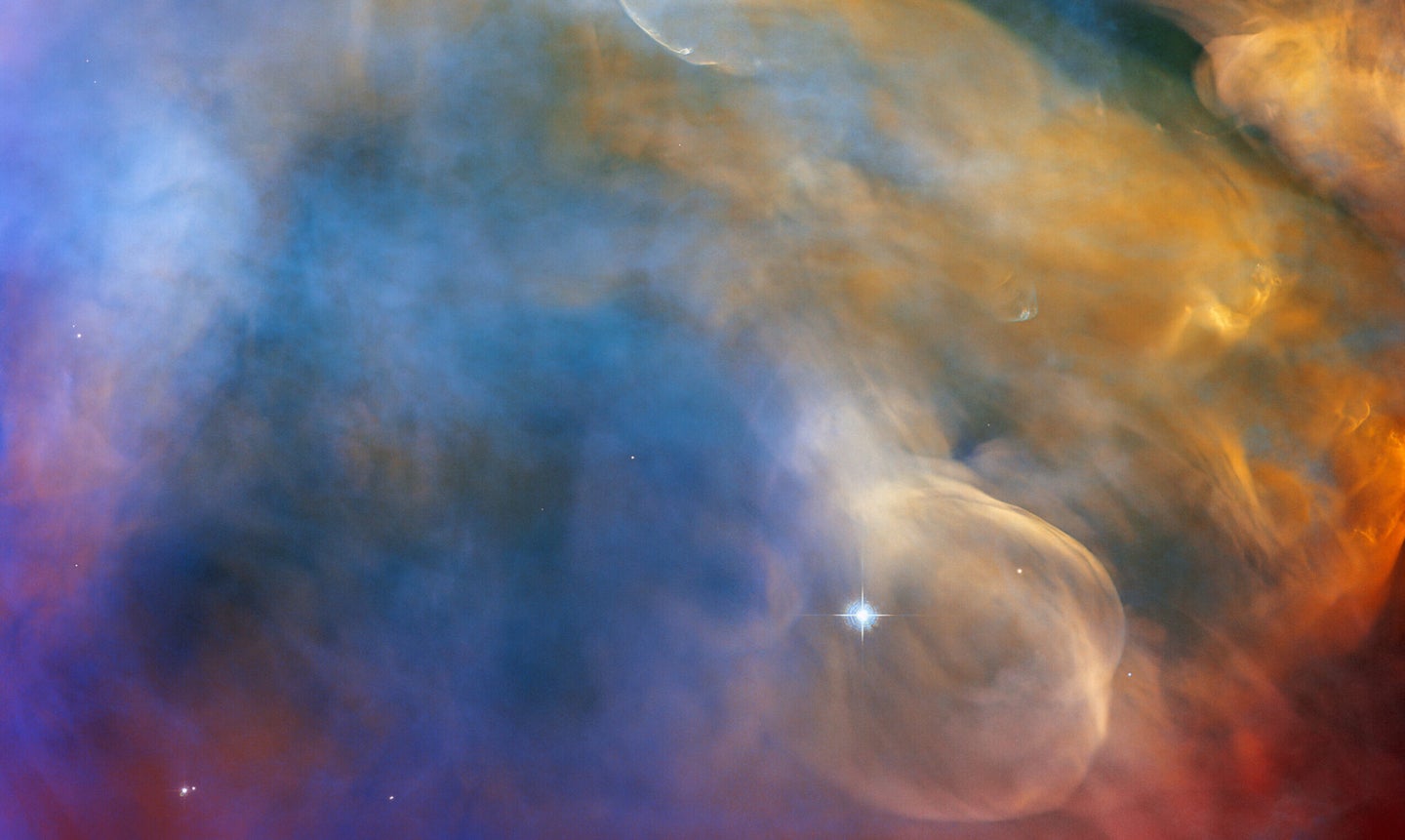NASA releases Hubble images of cotton candy-colored clouds in Orion Nebula
A stunning new visual shows one of the galaxy’s most colorful spots.

The Hubble Space Telescope has captured a stellar new image that resembles a giant Claude Monet painting in the sky.
Swirling around like giant pieces of cotton candy, this colorful cloudscape is about 1,000 light years away from Earth and surrounds the Herbig-Haro object HH 505.
According to NASA, Herbig-Haro objects are the bright and luminous regions surrounding newborn stars. They form when either stellar winds or jets of gas are released from these infant stars, creating super fast shockwaves, or outflows, that collide with nearby gas and dust at high speeds.
HH505’s outflows originate from a star named IX Ori, which sits between the stars Alnitak, Saif, and Rige on the outskirts of the famed Orion Nebula. Orion is an incredibly dynamic area of activity in space and is one of the most photographed areas in the Milky Way galaxy. It can be visible from the Earth due to its close proximity to Earth and immense size at 24 lightyears wide.
[Related: This glittery Hubble image shows how far we’ve come in studying distant stars.]
It is also a giant galactic baby star nursery and an example of how old life can generate new life in space. Nebulae are often built from the gas and dust of dying stars—everything from planetary nebulae to the dispersed debris from supernova explosions make up the raw materials needed to create new stars.
The Orion Nebula is full of intense ultraviolet radiation from all of the bright young stars, which the 32 year-old Hubble is particularly sensitive to. This sensitivity and sheer amount of ultraviolet star light in the area allows astronomers using the Hubble to directly observe the high-energy outflows from baby stars and learn more about their structures and formation.
The colorful new image was created by the Hubble’s Advanced Camera for Surveys (ACS) and a team of astronomers studying the dramatic properties of outflows and protoplanetary discs. It also reveals the bright shockwaves formed by the outflows as well as slower moving currents of stellar material, according to NASA.
Images of beautiful and colorful nebulae have been some of Hubble’s most popular contributions to the study of space. For Hubble’s 28th anniversary, it photographed the Lagoon nebula, followed by images of NGC 2014 NGC 2020 two years later, both of which advanced the study of interstellar nurseries.
